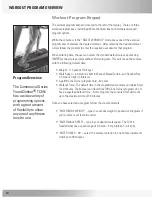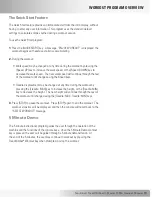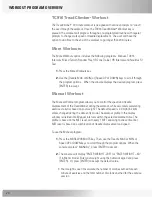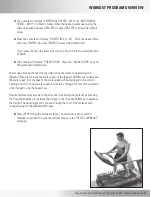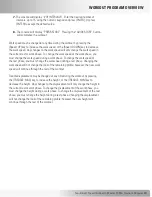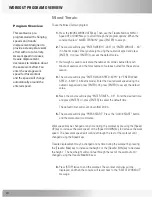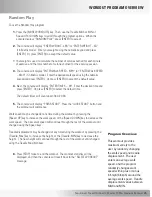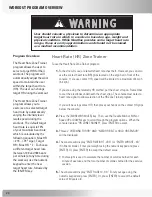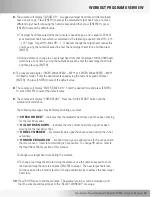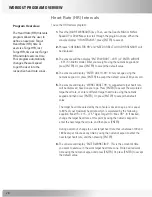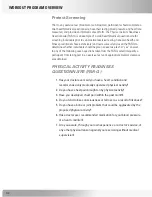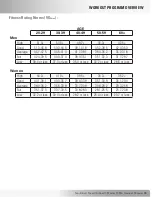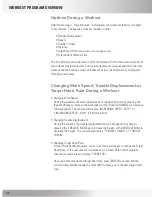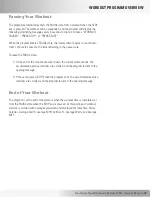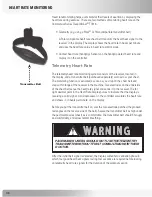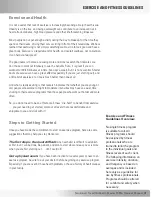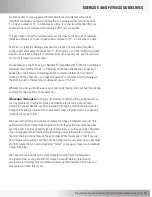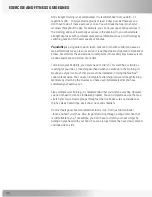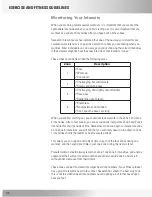
1
Nautilus® TreadClimber®, Model TC916 Owner’s Manual
Maximal heart rate can, however, vary greatly among different individuals of the
same age. One standard deviation is plus or minus 12 beats per minute (bpm), which
means that two-thirds of the population varies an average of plus or minus 12
heart beats from the average given by a prediction equation. If an individual’s age-
predicted maximal heart rate is higher than that person’s true maximal heart rate,
then his/her estimated VO
2 max
will be an overestimation of the correct or actual
value.
The final assumption addresses the issue of mechanical efficiency. Oxygen uptake at
any given work rate can vary by approximately 15% between different individuals.
Therefore, individuals vary in the amount of oxygen they require to perform a certain
exercise workload. Some individuals are more efficient at performing a given task
than others. As a result, the average oxygen consumption associated with a given
workload may vary significantly from one person to another. Thus, VO
2 max
predicted
by sub-maximal exercise tests tends to be overestimated for those who are
mechanically efficient and underestimated for those who are inefficient.
The point to remember is that sub-maximal exercise testing, though not as precise
as maximal exercise testing, is not without advantages. For example, the results
of such testing can provide a fairly accurate reflection of an individual’s fitness
status without the cost, risk, effort (on the part of the subject) and time involved in
max testing. If an individual is given repeated sub-maximal exercise tests and that
person’s heart rate response to a fixed workload is found to decrease over time, it is
reasonably safe to conclude that the individual has made improvements in aerobic
(cardiorespiratory) fitness, irrespective of the accuracy of the VO
2 max
prediction.
WOrkOuT PrOgrAm OvErviEW


